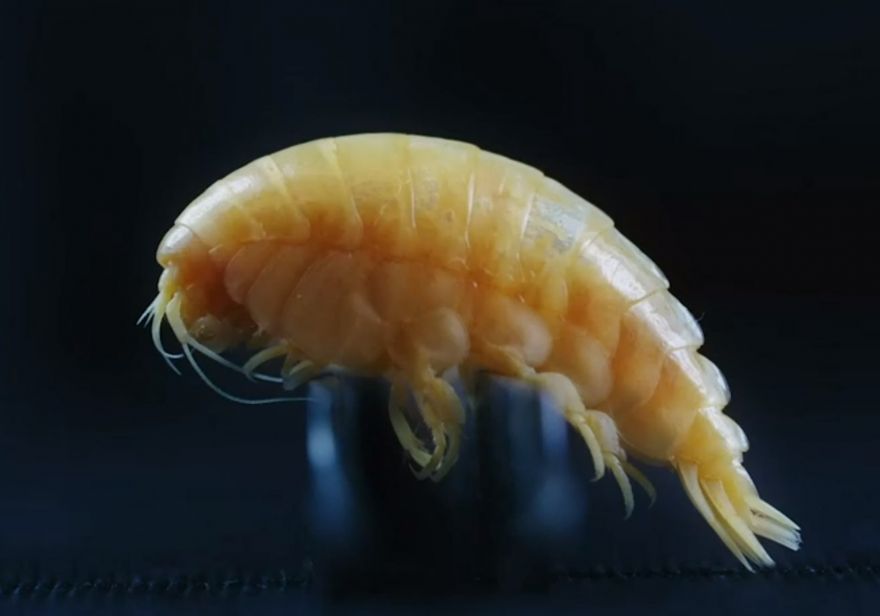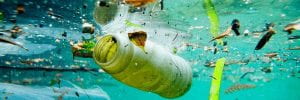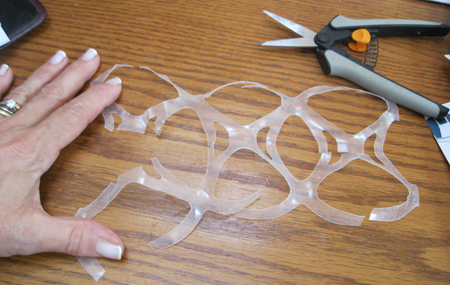As stated in last week’s blog, the ocean can reach extremely deep depths. The average depth of the ocean reaches 12,100 feet. The deepest part of the ocean is called the Challenger Deep and is located beneath the western Pacific Ocean in the southern end of the Mariana Trench. Challenger Deep is approximately 36,200ft deep.
While understanding these crazy depths, it’s important to note that sunlight stops lighting up the beautiful ocean when you reach 3,280ft! This dark level of the ocean is known as the “midnight zone.” Also, the pressure here is a little under 6000 pounds per square inch, so it takes some serious specialization to live down here.
These are all cool facts, but how are animals even able to see in complete darkness? Basically, these animals are blind, so they must rely on their physical bodies to feel around them. Due to the blindness, these creatures have no camouflage or bright colors. Because there is so little food, they have slow metabolisms, small muscles and grow very slowly.
Here is a list of a Few Animals Living in the Midnight Zone:
-
Anglerfish
 This angry looking fish lives in the Atlantic and Antarctic oceans deep in the midnight zone. Worn only by females, their most interesting feature is a long piece of dorsal spine that hangs above their mouths like a fishing pole—hence their name. They use this spine to bait prey by using its lure of luminous flesh. Interestingly enough, their mouths are so big they can actually swallow prey up to twice their own size!
This angry looking fish lives in the Atlantic and Antarctic oceans deep in the midnight zone. Worn only by females, their most interesting feature is a long piece of dorsal spine that hangs above their mouths like a fishing pole—hence their name. They use this spine to bait prey by using its lure of luminous flesh. Interestingly enough, their mouths are so big they can actually swallow prey up to twice their own size!
-
The Vampire Squid
Though it resembles both, the vampire squid is neither a squid or an octopus. Scientists have separated the vampire squid into its own special group. This creature has a staggering amount of eight arms and two tentacles. It does not suck or drink blood and instead gets its common name from its dark color and the skin that connects the arms, resembling a cape. It is surprisingly not a carnivore as it devours “marine snow”, which consists of bits of dead planktonic creatures.
-
Snipe Eel
This eel might be one of the weirdest looking fish you’ve ever seen! It has a long rope-like body with a curved upper and lower jaw. The jaws are covered with small pirate hooked teeth that help capture tiny shrimp as well as other crustaceans
Because we have only discovered 5% of the Earth’s Oceans, discovering new species like these incredible ones, are extremely important to the development of our world. As mentioned in last week’s blog, plastic has been found in the deepest parts of our oceans. This is why we need to do our part in stopping this spread and aiding in keeping our oceans clean!
Written By: Skylar Griffin
Edited by: Kailyn Hayes

 Throughout our time as humans living on the Earth, we have only discovered about 5% of the ocean. This leaves 95% of the ocean unexplored, as we are finding new species everyday. Most recently a species unearthed was named Eurythenes Plasticus…… sound familiar?
Throughout our time as humans living on the Earth, we have only discovered about 5% of the ocean. This leaves 95% of the ocean unexplored, as we are finding new species everyday. Most recently a species unearthed was named Eurythenes Plasticus…… sound familiar?  Eurythenes Plasticus is a
Eurythenes Plasticus is a 

 While turtles are also known to be killed from ingesting plastics, they are widely affected by fishing netting and plastic soda rings. These pollutants become wrapped around the turtles neck and shell making it tough to breath and move around. A way of helping this issue is to make sure to cut your plastic soda rings before you throw it away. While you may be throwing it in a trash bin there is still a possibility of it ending up back in the ocean. Cutting soda rings can aid with other marine life as well.
While turtles are also known to be killed from ingesting plastics, they are widely affected by fishing netting and plastic soda rings. These pollutants become wrapped around the turtles neck and shell making it tough to breath and move around. A way of helping this issue is to make sure to cut your plastic soda rings before you throw it away. While you may be throwing it in a trash bin there is still a possibility of it ending up back in the ocean. Cutting soda rings can aid with other marine life as well.